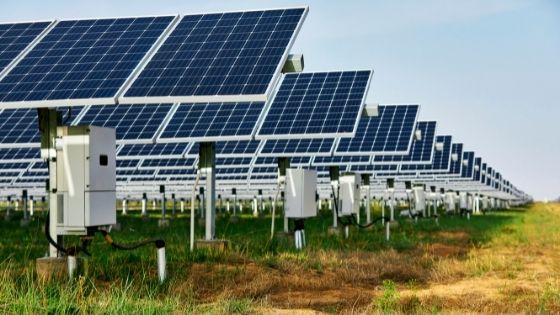Harnessing solar power to generate electricity for your home is one of the best ways to reduce your carbon footprint without compromising on comfort and convenience. Anyone can set up a solar power system on their rooftop. In addition to helping you do your bit to reduce pollution, using solar power also helps reduce your monthly outgoing expenses by minimizing your electricity bills. This is where solar net metering comes in. Read on to know more.


What is net metering?
When you set up a grid-connected solar power system, you can use net metering to lower your electricity bills. In fact, you may even reach a stage where you get a negative bill, i.e., when the state owes you money.
Solar net metering works with a bi-directional meter. When you share power generated by your solar panels with the electric grid, the meter runs backwards. This creates a credit in your account for the number of power units transferred. Later, when the seasons change and your solar panels cannot produce sufficient electricity or at night when you need power but the panels aren’t generating electricity, you can take power from the main grid. Instead of being billed for the number of units used, your usage will be billed against the credits earned.
Let’s take an example. Let’s say your solar panels produced an excess of 50 units of power. This was shared with the main grid and you earned a credit of 50 units. In the same month, you may have used about 30 units of power. At the end of the month, your bill will be calculated as electricity units shared with the main grid (50) minus electricity units consumed (30). Thus, you would be billed only for 20 units of power.
How does net metering lower your electricity bill?
Net metering lowers your electricity bill in two ways.
Firstly, as explained above, it reduces the number of electricity units being billed. Instead of being billed for your actual consumption, you are billed only your net consumption. Secondly, it lowers the rate at which your bill is calculated. Most utility providers have slabs with different rates at which the bill is generated. For example, a bill for up to 50 units may be calculated at the rate of Rs 10 per unit but if you consume 51 units, the bill may be calculated at the rate of Rs 15 per unit. Thus, though there’s only one extra unit consumed, the billed amount may be vastly different. By lowering the number of units billed, you can stay within the lower rate brackets.
Is net metering applicable for you?
Solar power systems can be set up in either a grid-connected or an off-grid system. A grid-connected system is one wherein your home stays connected to the main power grid. In this case, you don’t use a battery and when the panels don’t produce electricity you can take power from the main grid. In the case of an off-grid system, the excess power generated by the solar panels is stored in a battery. Power from the battery may be used at night. If you use an off-grid system, you will not get any bills since you don’t take any power from the grid.
Net metering is applicable only if you choose to set up a grid-connected system. Since an off-grid system is completely cut off from the main grid, net metering is not applicable.
You will also need to check the local regulations regarding net metering. Each state may have different regulations regarding net metering and its usage.
Benefits of a grid-connected system with net metering
The benefits of net metering and a grid-connected system are related.
The first key benefit is always having a reliable source of electricity. Solar panels typically produce the most electricity in the afternoons. But, this is when your consumption is the lowest. You need electricity most after sunset – you need to put the lights on only after the sun sets. An off-grid system can help meet this difference by saving power produced during the day in a battery. But, what happens during the monsoons and winters when the sun doesn’t generate enough electricity? During these months, you may frequently find yourself without power at night. But, with a grid-connected system, you are always assured of a steady supply of electricity. During the day, you can get power from the panels and at night, you get power from the main grid. You can choose to include a battery too and set up a hybrid system.
Secondly, with a grid connected system and net metering you don’t just lower your carbon footprint, you also lowers the entire neighborhood’s dependence on fossil fuels for electricity. The excess power generated by your solar panels is shared with the local power grid. From here, it is distributed to the other homes in your neighborhood. Thus, they too get clean electricity.
The distance travelled by electricity from the source where it is generated to the consumer is also reduced. When electricity travels over distances, a certain percentage is lost. The shorter the distance, the lower the amount of electricity lost.
Lastly, a net meter and grid connected system also lower the amount of initial investment required. One of the reasons people hesitate before setting up a solar power system is because of the heavy investment required. You need solar panels, an inverter, a battery, etc. With net metering, you do not require a battery. This would reduce your initial investment required quite substantially. You should also note that batteries have a limited lifespan and eventually need to be changed. With net metering and a grid connected system, you will not need to worry about these costs.
Setting up your net meter
Depending on the state where you live, you can set up solar net metering with a bi-directional meter or with two meters that calculate the flow of electricity both ways. There is no extra installation costs involved. Lower bills, less pollution, a steady supply of electricity; you’ll experience all the benefits of net metering for years to come.

























